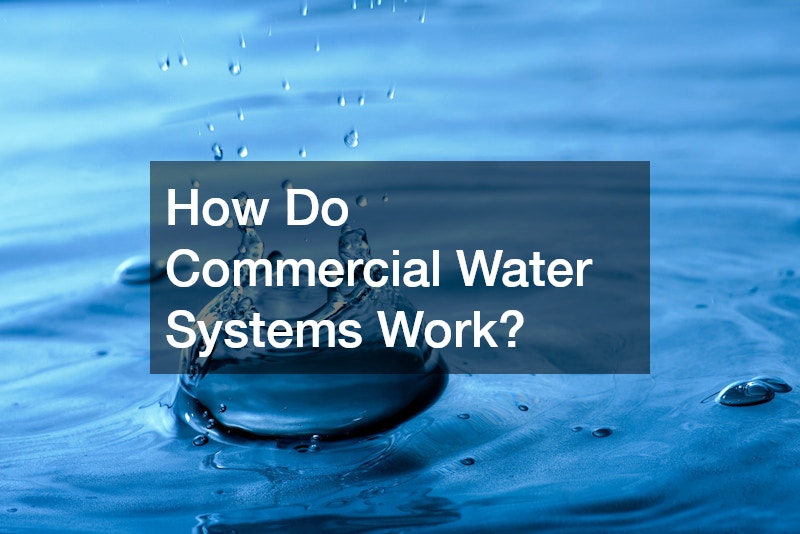Commercial water systems are vital components of large-scale operations, ensuring a reliable supply of water for various needs such as drinking, sanitation, heating, cooling, and processing. These systems are complex and designed to meet the specific demands of commercial establishments like hotels, office buildings, manufacturing plants, and hospitals. Understanding how these systems work involves looking at their main components, water sourcing, distribution, and treatment processes.
Water Sourcing and Supply
The first step in any commercial water system is sourcing the water. Typically, water is supplied from municipal sources, which have undergone primary treatment to meet basic safety standards.
In some cases, commercial facilities may draw water from wells or other private sources, especially in remote areas. The water from these sources is then stored in large tanks or reservoirs to ensure there is a sufficient supply to meet daily demands.
Water Distribution Network
Once water is sourced, it must be efficiently distributed throughout the facility. This distribution is managed through an intricate network of pipes, pumps, and valves designed to deliver water to various parts of the building or operation. High-capacity pumps are often used to maintain water pressure and ensure that it reaches all necessary points, regardless of the facility’s size or height. The pipes are usually made of durable materials like copper, steel, or high-density polyethylene (HDPE) to withstand high pressure and resist corrosion.
Water Treatment Processes
Before water is used in a commercial setting, it often undergoes additional treatment processes to meet specific requirements. For instance, in hospitals or food processing plants, water must meet higher purity standards than in general office buildings. Commercial water treatment systems can include filtration, softening, disinfection, and even reverse osmosis. These processes remove impurities, minerals, and microorganisms, ensuring the water is safe and suitable for its intended use.
Heating and Cooling Systems
In many commercial settings, water is also essential for heating and cooling systems. Boilers are used to heat water, which is then circulated through radiators or heat exchangers to provide warmth. Conversely, cooling towers use water to absorb heat from the building and release it into the atmosphere, helping to regulate indoor temperatures. These systems must be carefully maintained to prevent issues like scaling, corrosion, and bacterial growth, which can impair performance and efficiency.
Wastewater Management
After water is used, it must be disposed of properly. Commercial water systems include wastewater management components, which may involve treatment and recycling of water for non-potable uses, or simply directing it to municipal sewage systems. In some cases, wastewater may need to undergo treatment on-site to remove harmful substances before discharge.
Watch the video above to learn more about commercial water systems!.


